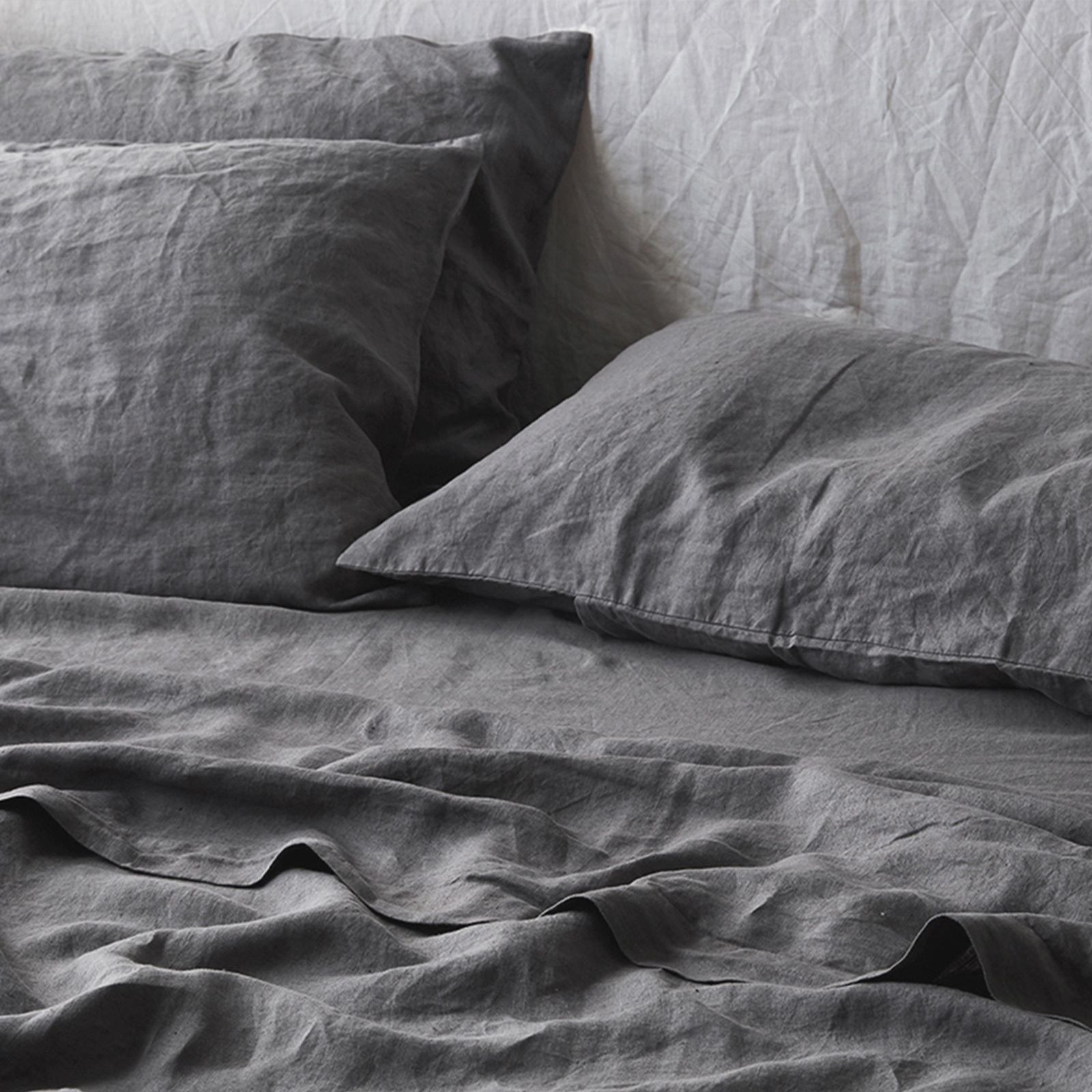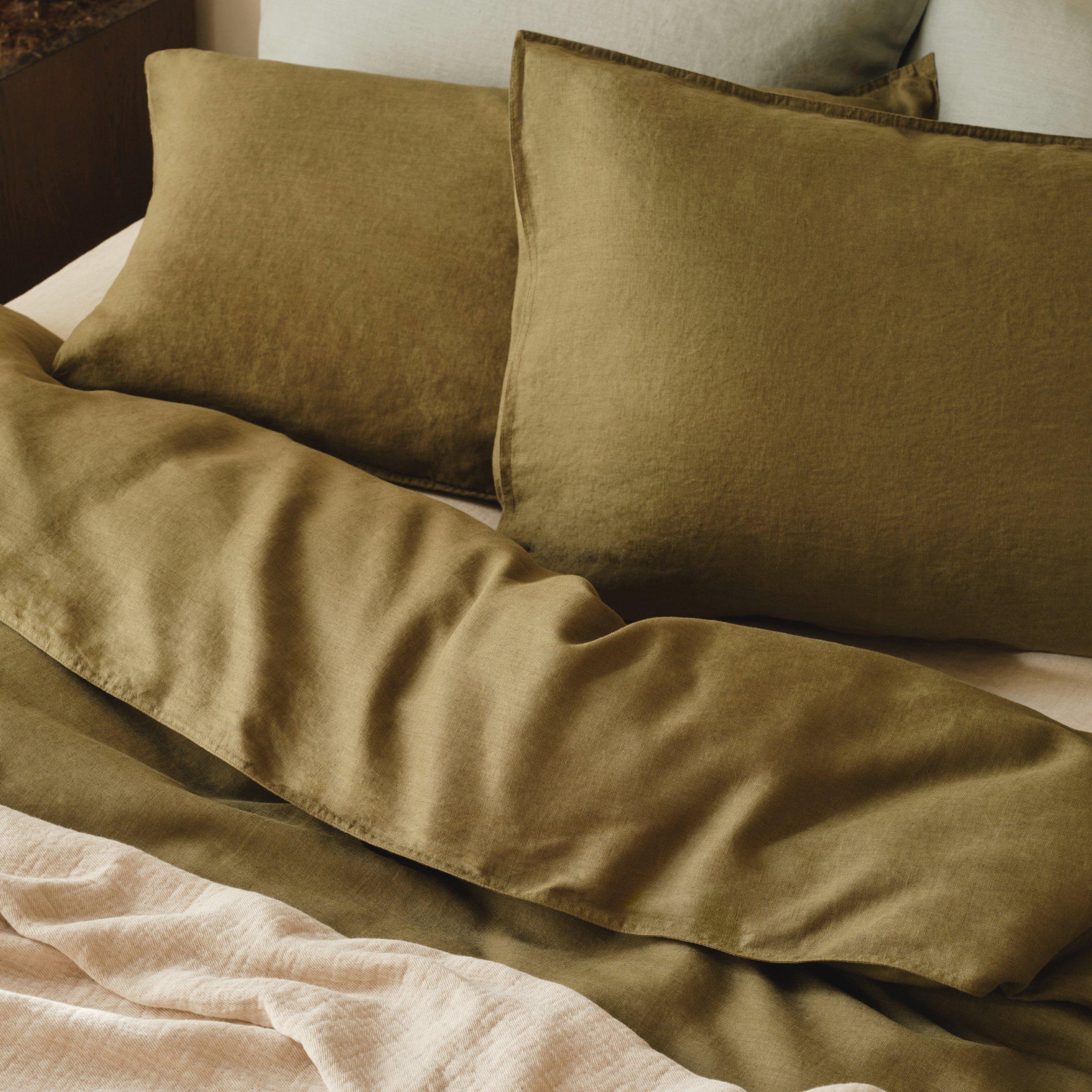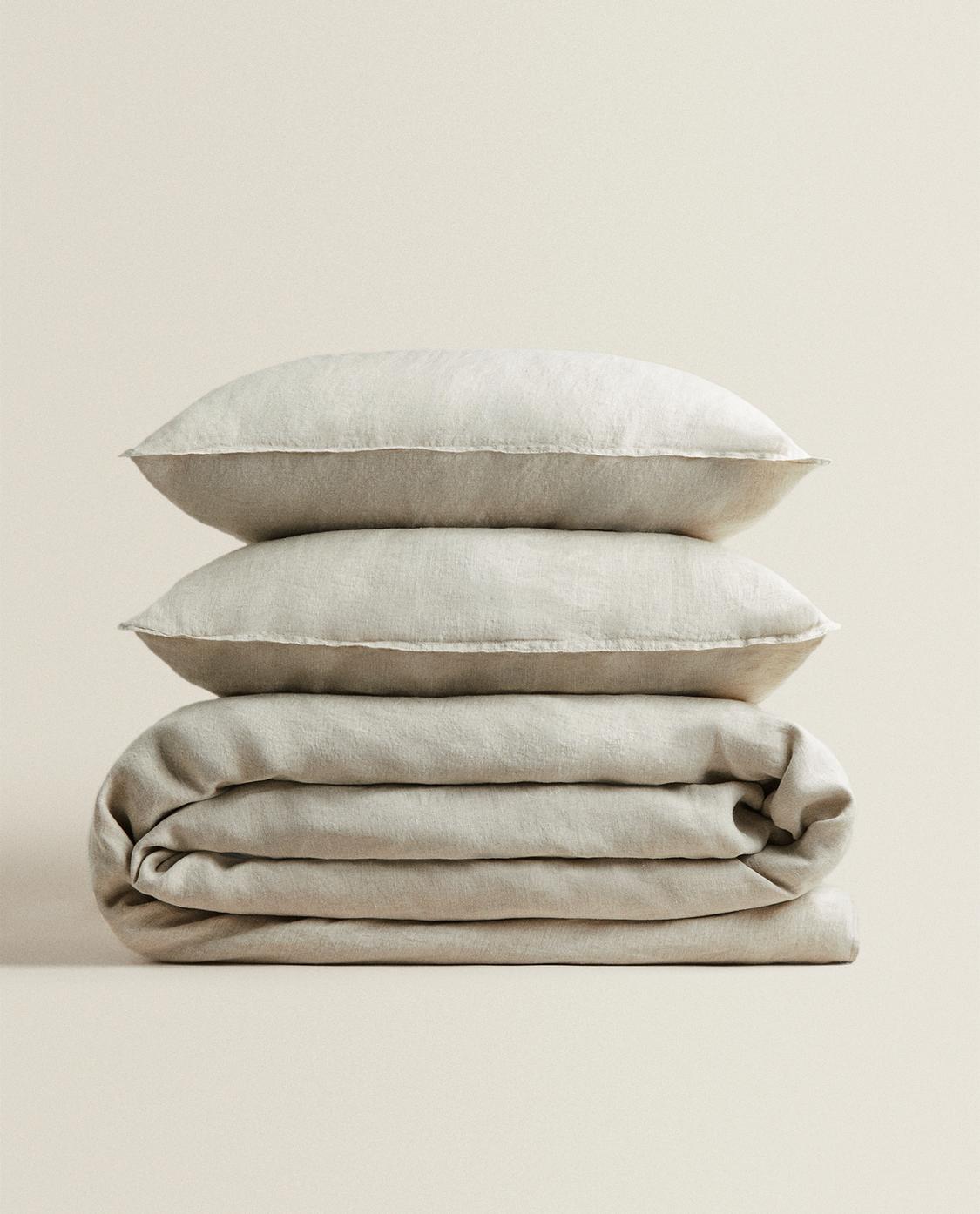The Ultimate Guide to Choosing Australia Linen for Your Home and Wardrobe
Understanding Bed Linen: The Eco-Friendly Option for Comfy Living
When you think of environmentally friendly textiles, linen frequently attracts attention for its special qualities. This natural fabric, made from the flax plant, provides both convenience and sustainability. Its amazing residential properties make it an optimal selection for warm climate and long-lasting use. What really sets linen apart from various other products? Understanding its origins and advantages can transform just how you view home textiles. Allow's discover the remarkable globe of linen further.
The Origins of Linen: From Flax to Material

Linen, one of the earliest textiles known to mankind, has a remarkable trip that begins with the humble flax plant. Once collected, the flax stalks undertake a procedure called retting, where they're soaked to separate the fibers from the woody parts.
When you see linen fabric, you're observing centuries of workmanship. The weaving procedure transforms those spools of thread into the attractive, sturdy towel you love. Linen has been valued for its natural look, making it a favored for every little thing from garments to home textiles. Following time you touch linen, remember its abundant background that connects you to old societies and their traditional practices.
The Unique Characteristic of Bed Linen
Among the standout attributes of this amazing material is its breathability. When you put on linen, you'll see just how it enables air to distribute, keeping you cool on warm days. This residential or commercial property makes it an excellent option for summer garments and bedding.
Linen additionally flaunts exceptional moisture-wicking capabilities, pulling sweat far from your skin and allowing it to vaporize quickly. You will not really feel clammy, also in moist problems. Furthermore, bed linen is sturdy, frequently becoming softer and extra comfy with each clean, which suggests it can stand the examination of time in your wardrobe.
An additional unique element is its natural structure; the slight abnormalities give bed linen a personality that enhances your design. Plus, it withstands wrinkles better than many other materials, so you can enjoy a relaxed yet brightened appearance without much effort. Embrace bed linen, and you'll value its convenience and distinct beauty.
Environmental Benefits of Linen
When you select bed linen, you're not just deciding for an attractive material; you're likewise supporting sustainable manufacturing practices. Linen's compostable and biodegradable nature makes it a wise choice for the setting. Plus, it requires substantially less water to produce contrasted to various other fabrics, aiding preserve this valuable source.
Lasting Production Practices
Although several materials have substantial environmental effects, bed linen stands out as a result of its sustainable manufacturing methods. When you select bed linen, you're selecting a material made from the flax plant, which requires marginal water and chemicals. This durable crop can thrive in poor soil problems, lowering the requirement for chemical fertilizers. Additionally, the entire flax plant is used in manufacturing, minimizing waste and promoting source performance.
Bed linen production is often much less energy-intensive compared to other fabrics, as it involves natural processes rather than synthetic therapies. By sustaining linen, you're adding to a more lasting fabric sector that focuses on green methods. Choosing bed linen not just enhances your convenience however likewise aligns your values with ecological responsibility.
Biodegradable and Compostable Product
Bed linen's environment-friendly nature extends beyond its sustainable manufacturing; it's compostable and additionally biodegradable, making it an excellent choice for eco conscious consumers. When you choose linen products, you're choosing for materials that damage down normally, returning nutrients to the planet. Composting bed linen can improve dirt, advertising healthy and balanced plant growth.
Low Water Intake
Among the standout benefits of linen is its reduced water usage throughout cultivation. Unlike cotton, which requires significant watering, bed linen's flax plant thrives on minimal water, making it a much more lasting selection. You'll appreciate understanding that for every load of bed linen produced, considerably less water is needed contrasted to several other textiles. This means that selecting bed linen aids preserve crucial freshwater resources, which is essential in today's environment. Furthermore, linen's all-natural drought resistance permits it to expand in less-than-ideal conditions, even more decreasing its environmental effect. By deciding for bed linen, you're not simply purchasing quality; you're likewise sustaining a textile that promotes responsible water use and adds to a much healthier world for future generations.
Linen vs. Other Fabrics: A Contrast
When you contrast bed linen to various other textiles, you'll see its exceptional breathability and convenience, making it excellent for cozy weather condition. And also, bed linen stands out for its longevity and durability, usually outlasting lots of frequently utilized products. As you consider your selections, the environmental effect of each textile will certainly also play a necessary role in your decision.
Breathability and Comfort
Linen stands out amongst products for its impressive capacity to enable air circulation. Unlike synthetic fabrics, which can catch warmth and wetness, linen's natural fibers wick away sweat, maintaining you trendy and completely dry.
Cotton is usually commended for its gentleness, but it does not match bed linen's breathability. If you focus on comfort, specifically in summertime, linen ought to be your best option.
Durability and Long Life
While several fabrics offer varying degrees of toughness, bed linen truly succeeds in longevity, making it a smart financial investment for your closet. Unlike cotton or artificial products that might wear out quickly, linen obtains stronger with each laundry. You'll discover that linen's breathable nature also decreases wear from sweat and wetness, which can harm other materials.
Environmental Effect Contrast
Although numerous materials contribute to environmental problems, bed linen stands out for its environment-friendly top qualities. Unlike cotton, which needs large water sources and chemicals, linen is made from flax, a plant that flourishes on minimal water and requires less chemicals. This implies you can feel excellent regarding your option while reducing your carbon impact.
When contrasted to synthetic textiles like polyester, bed linen's biodegradability shines. While polyester can take centuries to disintegrate, linen breaks down normally, returning nutrients to the soil.
Choosing bed linen not only advertises sustainable farming practices yet likewise sustains a healthier planet. By deciding for linen over standard materials, you're making a conscious choice that benefits both your convenience and the setting.
Caring for Your Bed Linen Textiles
To assure your linen textiles continue to be in terrific problem, you'll want to comply with some uncomplicated care guidelines. Clean your bed linen in cold water on a gentle cycle to stop it from shrinking or shedding its form.
When it concerns drying out, air drying out is best. Choose a low warm setup and get rid of the things while they're still a little damp to minimize wrinkles if you utilize a clothes dryer. Iron the bed linen while it's still damp for easier handling, or steam it to keep it looking crisp.
For storage, keep your bed linen in a trendy, completely dry place. Avoid direct sunlight to avoid fading. With these basic methods, your bed linen fabrics will certainly keep their appeal and last for several years, making them a lasting enhancement to your lifestyle.
Integrating Bed Linen Into Your Home Style
Caring for your bed linen fabrics not just maintains their top quality yet additionally opens a globe of opportunities for integrating them into your home design. You can start small by adding bed linen toss cushions to your sofa, instantaneously raising the area with structure and warmth. Consider linen drapes that filter sunshine magnificently, producing a soft, airy atmosphere in any kind of area.
For an extra rustic appearance, try making use of linen table linens or runners throughout meals; they include a sophisticated touch and are easy to tidy. If you're feeling daring, mix and match various linen shades and patterns to create an one-of-a-kind, layered result.
Don't ignore bed linen blankets-- curtain one over a chair or your bed for an inviting feeling. By thoughtfully integrating bed linen right into your design, you enhance both convenience and style, making your home a tranquil resort.
The Future of Linen in Sustainable Living
As consumers increasingly focus on sustainability, bed linen becomes a frontrunner in environment-friendly textiles. Its manufacturing makes use of less water and pesticides contrasted to conventional cotton, making it a much more eco accountable selection. As you look towards a sustainable future, incorporating bed linen into your wardrobe and home can substantially reduce your carbon footprint.
Cutting-edge brands are now concentrating on lasting practices, from using natural flax to applying circular economy principles. You'll locate that bed linen's resilience implies it lasts much longer, lowering the need for frequent replacements.
Additionally, as even more individuals welcome minimal lifestyles, linen's timeless appeal and flexibility will keep it appropriate. By selecting bed linen, you're not simply selecting convenience; you're also supporting sustainable practices.
In the upcoming years, the demand for bed linen is anticipated to grow, strengthening its place in a much more eco-conscious world. Consider making linen a staple in your sustainable living trip.
Frequently Asked Inquiries
Is Bed Linen Ideal for Individuals With Allergic Reactions?
Yes, bed linen's natural fibers are hypoallergenic, making it suitable for people with allergies. Its breathable nature aids lower dampness and microorganisms accumulation, contributing to a healthier sleeping setting. You'll likely Linenshed locate it comfy and risk-free.
Can Linen Be Colored Quickly?
Yes, you can dye linen quickly. Its all-natural fibers take in dyes well, enabling vibrant shades. Simply ensure you utilize the appropriate color type and follow proper strategies to accomplish the desired outcomes without harming the fabric.
Just How Does Bed Linen Compare in Resilience to Cotton?

What Weight of Bed Linen Is Finest for Summer Season Clothing?
For summer clothing, lightweight bed linen around 4 to 5 ounces per backyard is ideal. It maintains you cool, breathable, and comfy in heat (Linen). You'll appreciate how it drapes and moves with you easily

Can Linen Be Used for Outdoor Furniture?
Yes, you can use linen for exterior furniture. It's sturdy and breathable, making it a fantastic option for warm weather condition. Just be sure to select a treated version to withstand the elements and keep its look.
Verdict
Including bed linen right into your life not just improves your comfort but also sustains an extra lasting future. By selecting this environment-friendly material, you're making a conscious choice that profits both your wellness and the planet. With its unique residential or commercial properties and minimal ecological influence, linen is a smart selection for your home style and way of life. Embrace bed linen, and take pleasure in the ideal blend of design, sturdiness, and sustainability in your daily living.
Linen's compostable and eco-friendly nature makes it a smart selection for the environment. By including linen right into your home, you're not just enjoying its comfort and durability; you're likewise assisting and sustaining eco-friendly techniques create a much healthier planet. The Future of Linen in Lasting Living.
